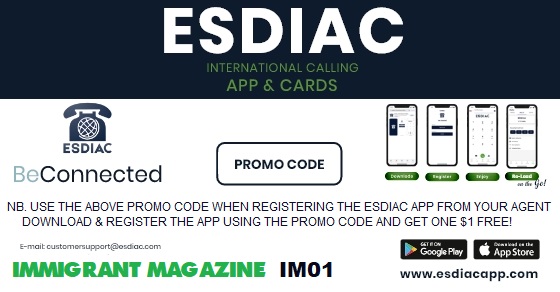Expert cites 9 negotiator archetypes and how each of can help and hinder a ‘win’
TIM, Making Money, Eldonna Lewis-Fernandez
Here are three questions you may have never asked yourself prior to entering into a negotiation, but should: What kind of negotiator am I? What kind of negotiator would I like to be? And, more importantly, what kind of negotiator do I ‘need’ to be in this situation to emerge victorious? One key to being a master negotiator is intuitively employing different approaches and taking an alternate direction based on each given situation. But, in order to do this effectively, one must first understand the varying, and quite distinctive, negotiator personality archetypes—one or the other of which most people typically utilize while they “wheel and deal.” Without this strategic aptitude and application of the right persona for the deal at hand, at best it’ll be harder than it needs to be and at worst all could be lost.
An archetype is defined as a pattern of behavior or thought or, according to Oxford Dictionary, “a very typical example of a person or thing.” So one’s “negotiation archetype” is someone’s “way of being” throughout the process—those particular characteristics and behaviors that one would use to describe the person and their deal-making methodology. This can be regarded as a “role” being played, whether contrived or realistic, but the emphasis being on how the person is operating within that role.
Learning how to effortlessly and seamlessly apply certain archetypes to specific situations is a powerful skill. This kind of adaptability and fluidity among different deals—and even as one given deal ebbs, flows, unfolds and changes course—can gain you substantial leverage and advantages, including the ultimate win. Even better when it’s a win-win for all parties involved.
What are the typical negotiation personalities? While the following nine personality archetypes are not all-inclusive, they do represent the primary means by which the majority of people negotiate. Achieving the right balance and striking just the right cord with these archetypes based on each negotiation situation at hand is sure to pay dividends.
- The Politician – This archetype is someone who influences or outmaneuvers others. They often seek support by appealing to popular passions and prejudices through carefully crafted language. A negotiation politician typically campaigns to influence or persuade others to support their point-of-view. Often this approach is only advantageous for one’s own advantage—also known as a win-lose proposition.
- Helpful because: The politician archetype is personality-driven more than anything else. Using your charisma to get everyone on the same page for a positive cause or outcome is a great way to build success for a particular cause. This can be helpful in any situation where the greater good is the goal. It is also a great leadership strategy to guide a group towards a particular positive outcome.
- Hindrance because: Relying only on our charisma and ability to galvanize others rather than facts, figures and other pieces of information that can make a deal swing your way in more logical and quantifiable terms can render you vulnerable when it’s time to get down to the nitty gritty for the close. Trust may be compromised if you don’t have the data to back up your position.
- The Direct Communicator – This archetype is someone who gets to the point every time. They don’t have any time for hearing the story or any excessive communication that will waste time. They want to discuss the facts only and not hear any of the back story or an overabundance of detail. They ask for what they want. Their way of communication is clear, concise, powerful and quick in order to achieve an agreement or resolution to the negotiation situation.
- Helpful because: you will get to the point and not waste time in the weeds with details that could delay, and possibly derail, the deal.
- Hindrance because: you might put the other side off and offend if they are not receptive to this hard-hitting style. You also may miss out on a critical piece of information that might otherwise have been revealed had you spent more time in discussion with the other party.
- The Hinter – This is the opposite of the Direct Communicator. The Hinter archetype does not ask for anything directly but rather they hint around at what they want. It can be done out of fear of being rejected or, sometimes, it is done as a manipulation technique to get the other party to do what is wanted without having ever been directly asked or mandated.
- Helpful because: It’s a way to test the waters without putting what you want out there in a more committed way. By not making direct requests, you may glean more information—and results—than you would have otherwise by leaving your hints open to interpretation.
- Hindrance because: You may not get any positive traction on what you want to occur or you may appear to be overtly manipulative, which could hinder the deal. This ambiguity can also make coming to terms a much longer and more frustrating and arduous process.
- The Storyteller – This archetype wants to tell the entire story. This is the person who, if you ask what time it is, they’ll tell you how to build the watch. With this archetype it’s hard to understand what the point is because of the overabundance of information they are sharing.
- Helpful because: You will disclose all details so the other side can fully understand what it is you desire or are presenting—and justifications related thereto. This approach leaves little room for the other side to doubt, can foster a sense of trust and may result in conversation that opens negotiations further to great benefit.
- Hindrance because: Many in today’s time-pressed society don’t have time, patience or inclination to hear the story and don’t want to know ancillary details. The receiving party may tune you out and not hear a word you are saying—and perhaps get impatient and frustrated—because there is too much information being provided. This may make people averse to working with you again.
- The Bully – This archetype uses aggressive and browbeating behavior to get their way in a negotiation. It could be by yelling or body posture, threats or harassment, menacing words or other fear-based tactics they deem necessary to back the other side into a corner so as to take the power position. The object is to intimidate the other party so they’ll give in and agree to the bully’s terms.
- Helpful because: Exerting your power and dominance up front may prevent the other side from attempting to employ a strategy that takes advantage of you. If they see your strength up front they may change their position before ever asserting it.
- Hindrance because: The other side may regard you as out of control, not in your right mind, and generally unpleasant to deal with. It’s more than likely they’ll not want to do business with you again, and that your reputation will precede you with others.
- The Non Negotiator – This archetype doesn’t negotiate at all. They fear negotiation, which they regard it as confrontational, and want no part of it. They will agree to whatever the other party wants even if it means losing out significantly. They just want the situation to go away as quickly as possible.
- Helpful because: The only reason this might be helpful is if the other side interprets this as a shutdown strategy and they either take pity on you or don’t want to take advantage of you. They may offer a better deal because of it, but clearly this is not an expected or common outcome.
- Hindrance because: Aside from being perceived as weak from an image standpoint, you will also most likely get a bad deal or taken advantage of. Most discussions start out with each side offering something to negotiate up or down from and go from there. If you take the first offer that’s presented when the other party started high fully expecting to negotiate down, as most do, you may end up in a deal that doesn’t make sense financially or otherwise.
- The Victim – This archetype attempts to parlay their hard luck to gain sympathy regarding their situation so the other party will “go easy” on them. They may go on in great detail about the situation they are experiencing in an attempt to make others feel sorry for them—the hopeful end game being that the opposing party will be more receptive and agreeable to their position and terms and not negotiate as hard as they would otherwise.
- Helpful because: Someone may indeed feel sorry for your situation and give you a break. We all have things happen in our lives and careers and, if you use this as an honest way to get a better deal, both sides can often feel good about the outcome.
- Hindrance because: Oftentimes people use this as a manipulation tactic in an attempt to get out of a situation. The other side may see this for what it is and call you out on it, which can be embarrassing and undermine your credibility. Not only will you not get a better deal, the other party may actually negotiate harder than they would have otherwise in response to what they feel is an attempted manipulation.
- The Nutburger – This archetype is someone you can’t negotiate with. There’s no reasoning with someone whose behavior is irrational, overly emotional or just plain nutty. This personality type can be construed as anxious, stressed, frustrated, angry or downright weird.
- Helpful because: Deflection by rant is indeed a negotiation strategy. If you go on a rant or are clearly upset about an injustice or something that is justifiably not fair and reasonable, the other side may be more apt to reevaluate your position and give you a better deal.
- Hindrance because: You can’t negotiate with crazy. You may lose the deal all together if the other side thinks you are unstable or unreasonable to do business with. Being logical and having the ability to effectively give and receive information is an important aspect of deal-making and this personality type doesn’t have—or utilize—this capacity.
- My Fair Lady/An Officer and a Gentleman – These archetypes are what you want to strive for in your negotiations. Characteristics include negotiating with integrity, ethics and considering what is and is not fair and reasonable for both sides to create a win-win outcome. Those most effective use some or all of the archetype characteristics above in differing situations. The key is knowing which ones to use and when to use them ethically and honorably in order to achieve your objectives in the negotiation.
- Helpful because: You are using a balance of all applicable archetypes when it is required. Understanding how you and how other people negotiate, and where they are coming from, allows you to present your side utilizing a calculated approach that can throttle as needed.
- Hindrance because: You may spend more time analyzing how a person is negotiating than paying attention to the details of the negotiation, itself. Over analysis is paralysis as the saying goes and you don’t want to get stuck scrutinizing on a macro level instead of negotiating the all-important micro matters.
Understanding these nine archetypes and discerning where you tend to naturally fall, how other people are categorized in relation to you, and how to capitalize on a different type of personality approach (and deal with those of others) is a tremendous asset in your negotiation arsenal. Such archetypal adaptability is sure to serve you well as you strive to reach agreements with others—however challenging a person they may be.
Veteran negotiation and contracts expert Eldonna Lewis-Fernandez, author of “Think Like a Negotiator,” has over 30 years of experience crafting killer deals both stateside and internationally, many in excess of $100 million. She’s currently the CEO of Dynamic Vision International—a specialized consulting and training firm that helps individuals hone negotiation skills—as well as a nationally regarded keynote speaker, session leader and panelist on the Art of Negotiation. Eldonna may be reached online at www.ThinkLikeANegotiator.com.











